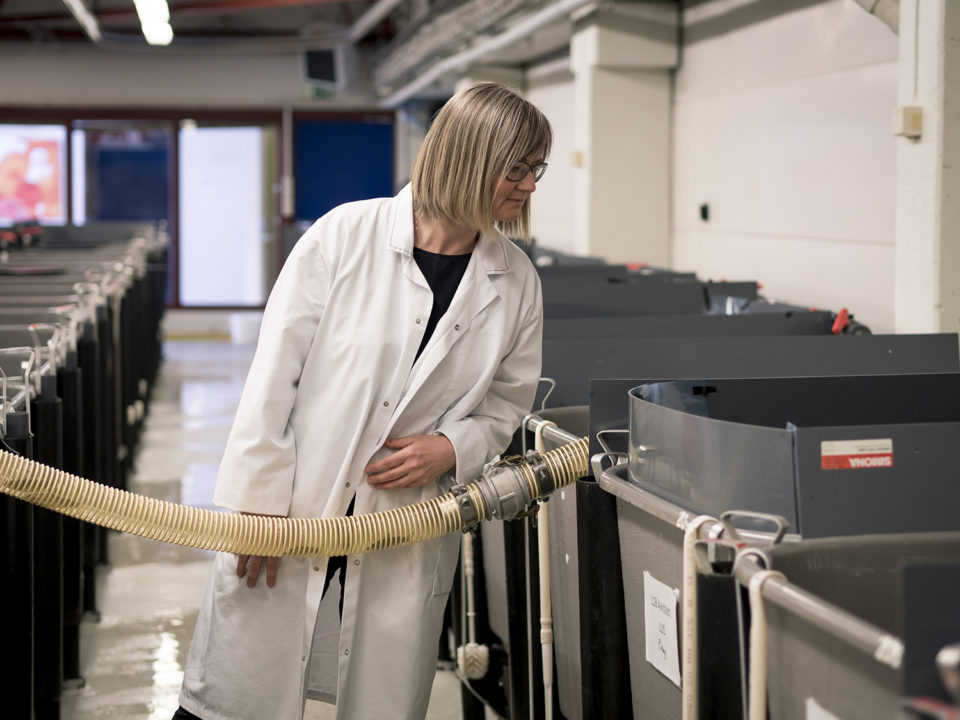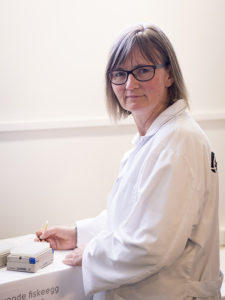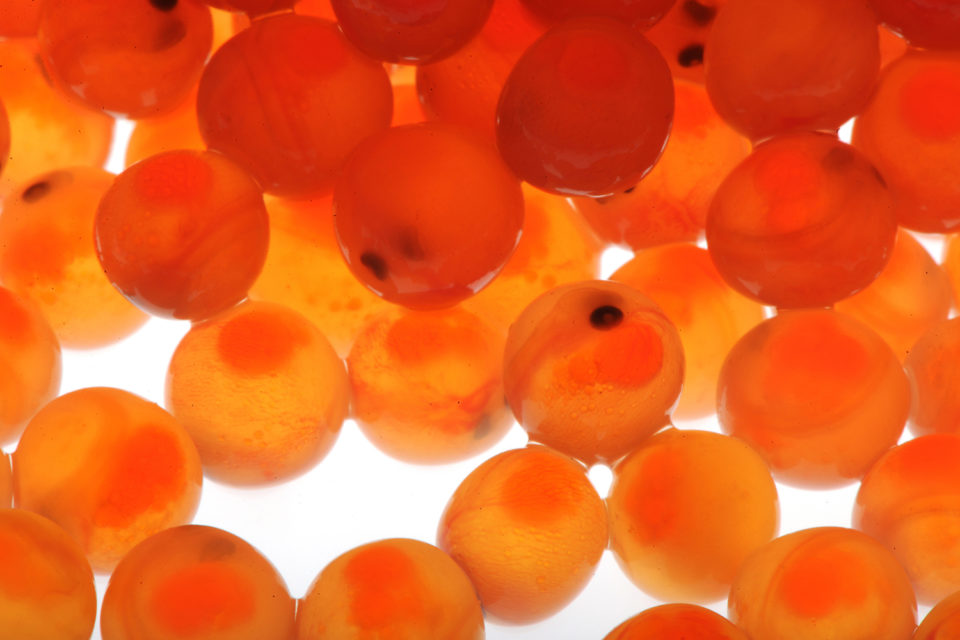Nina Santi sees new technology at the forefront of animal welfare, nutrition and production

The CEO of AquaGen – one of the leading providers of fertilized Atlantic salmon and rainbow trout eggs to the global industry – knew that the Norwegian research group’s work in genomics was key to the industry’s future.
And that was before she even worked there.
Nina Santi, who studied genomics of the Infectious Pancreatic Necrosis (IPN) virus for her Ph.D., found that the disease challenge models she was working with, only performed in a predictable way if she used wild salmon or susceptible families from AquaGen.

“I understood that since host resistance was so important under experimental conditions, it would also be essential in commercial fish farming. That led me, 11 years ago, to ask AquaGen for a job, and I have been on a very interesting journey ever since,” she told the Advocate. Santi may have imagined a rather different path as a student, when she entered university to train as a veterinarian, but finds her current role as one for which she is best suited. On a day to day basis as the company leader, Santi enjoys getting the best out of the its employees – around 130 in Europe and 130 in Chile – and acting as a mentor.
“This is a central task,” she said. “Capable people and new knowledge take the industry forward and make things happen. For me it is very important to be open to initiatives from all levels of our organization. It is the people closest to any challenge that are most likely to find the best solution, so I take time to listen to everyone.”
Being an integrated part of the aquaculture industry is also vital: “We need to know the industry from the inside, and to see and feel the challenges in order to develop the right products for our customers,” Santi said.
At the heart of AquaGen’s work is the science of genomics, which even Santi admits is a complex subject that is often misunderstood.
“A genome is an organism’s complete set of DNA, including all of its genes. It is to a large extent the genes of an individual that determines the biological potential,” she explained.
“Genomics are among the tools we use to improve different traits of importance to the aquaculture industry in selective breeding. Knowing the genetic makeup of an individual fish, and the association to favorable traits, helps us predict the strengths and weaknesses and aids in the selection of parents for future generations of fish. This is not genetic modification, as we are only using the natural variation in DNA that already exist among individual fish in this selection.”
Santi believes that selective breeding is perhaps the most important factor for reducing overall production time in salmon farming. She explained that 20 years ago, it took approximately six months longer to produce an Atlantic salmon to harvest size than it does today. Improved growth and feed efficiency from selective breeding have resulted in significant savings in feed cost and reduced risk time for the industry.
“AquaGen was the first company to implement marker-assisted selection using quantitative trait loci (QTLs) directly in egg production. The first marker introduced in the breeding program became available to salmon farmers in 2009 and led to major reductions in the number of IPN outbreaks and losses from disease both in freshwater and seawater,” she said.

A key part of Santi’s role is overseeing the direction of AquaGen’s research, and the quest to breed salmon that have better resistance to sea lice is currently at the forefront. Overcoming that issue, she added, is essential if the industry is to develop sustainably.
Santi explained that AquaGen is also working to establish new methods for selection for improved feed efficiency, and recent results from an experimental set-up look promising. A number of projects looking at enhancing fish welfare – in terms of skin and gill health – as well as nutrition, vaccine development and production management.
“I believe that genomics will play a significant role in untangling some of the mysteries behind the biology of Atlantic salmon. In 10 to 20 years we expect that new gene editing technologies will have made a significant impact in animal and plant production worldwide,” she said. “So far, lack of regulation is stopping the implementation of this technology in practical breeding, but it is already demonstrating its potential as a research tool.”
Follow the Advocate on Twitter @GAA_Advocate
Author
-
Nicki Holmyard
Nicki Holmyard has written about the seafood industry for longer than she cares to remember! A committed pescetarian, she is also a partner in the UK’s first fully offshore rope-grown mussel farm.
Tagged With
Related Posts

Health & Welfare
GOAL 2017 video: Neil Manchester, Hendrix Genetics
At the Global Aquaculture Alliance's annual GOAL conference, held last month in Dublin, Ireland, we introduced a series of Pecha Kucha presentations about the future of aquaculture. We'll feature all seven on the Advocate, starting with Neil Manchester's rapid-fire view at how genetics are improving breeding techniques for aquaculture.

Health & Welfare
Animal health giants have sea lice in their crosshairs
Alltech and Benchmark have been working on the next generation of sea lice solutions and believe they have new products that can help salmon farmers win.

Intelligence
Aquaculture UK: Stepping up to the plate
There’s considerable opportunity to grow the UK aquaculture industry. At the Aquaculture UK exhibition and conference in Aviemore, Scotland shows the way.

Innovation & Investment
Norway showcases halibut farm as sustainability star
Recognizing its potential as a sustainable fish producer, Norway highlights land-based halibut farmer Sogn Aqua in the debute of The Explorer digital showroom. The Advocate recently paid a visit to the farm in Ortnevik.


